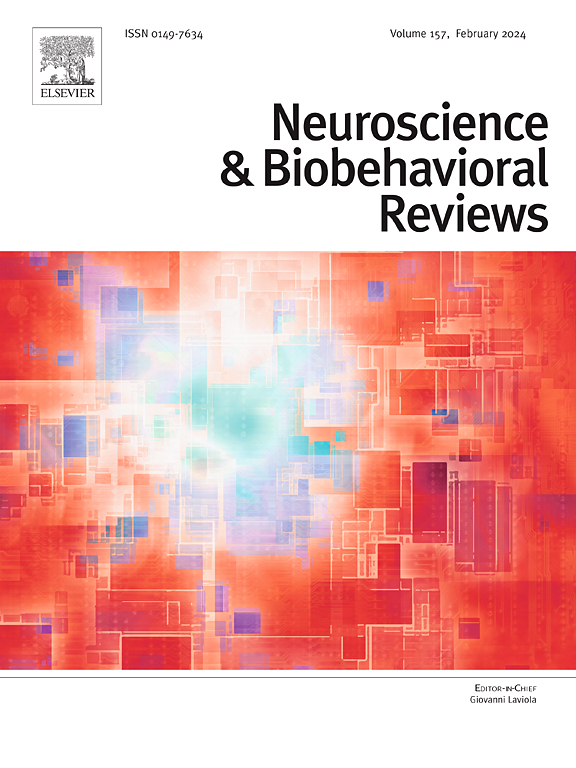迷幻药治疗药物使用障碍的疗效和安全性:系统综述
IF 7.5
1区 医学
Q1 BEHAVIORAL SCIENCES
引用次数: 0
摘要
裸盖菇素是一种血清素能致幻剂,可能对物质使用障碍(sud)有治疗作用,但其总体疗效和安全性仍不确定。本系统综述通过OVID于2024年5月22日进行的系统数据库检索,评估了裸盖菇素治疗sud的安全性和有效性,并总结了在clinicaltrials.gov上注册的26项正在进行的临床试验。在16项已发表的纳入研究中,7项(43.75 %)关注酒精使用障碍(AUD), 5项(31.25 %)关注烟草使用障碍(TUD),其余研究关注可卡因使用障碍(CUD)(1,6.25 %)、阿片类药物使用障碍(1,6.25 %)、尼古丁使用障碍(1,6.25 %)和多种sud(1,6.25 %)。研究设计包括开放标签试验(5项,31.25 %)、横断面观察性研究(6项,37.5% %)、定性分析(2项,12.5 %)、一项双盲RCT(6.25 %)、一项fMRI先导研究(6.25 %)和一项长期随访(6.25 %)。10项研究(62.5 %)使用裸盖菇素辅助心理治疗(PAP),剂量范围从微剂量到20-40 mg/70 kg。PAP与饮酒、戒烟和相关心理改善的显著减少有关。AUD研究报告重度饮酒天数减少,戒酒率增加,神经影像学数据表明大脑活动正常化。TUD的研究表明,戒烟率很高,神秘的经历预示着长期的结果。尽管裸盖菇素显示出减少阿片类药物依赖和尼古丁使用的潜力,但其他sud的研究结果却喜忧参半。初步证据支持裸盖菇素对AUD和TUD的有效性和安全性,特别是在心理治疗方面,但需要更大规模的临床试验来证实这些发现。本文章由计算机程序翻译,如有差异,请以英文原文为准。
Efficacy and safety of psilocybin for the treatment of substance use disorders: A systematic review
Psilocybin, a serotonergic psychedelic, may have therapeutic benefits for Substance Use Disorders (SUDs), but its overall efficacy and safety remain uncertain. This systematic review assessed the safety and efficacy of psilocybin for SUDs through a systematic database search conducted via OVID on May 22, 2024, and summarized 26 ongoing clinical trials registered on clinicaltrials.gov. Among 16 published included studies, 7 (43.75 %) focused on Alcohol Use Disorder (AUD), 5 (31.25 %) on Tobacco Use Disorder (TUD), and the remainder on Cocaine Use Disorder (CUD) (1, 6.25 %), Opioid Use Disorder (1, 6.25 %), Nicotine Use Disorder (1, 6.25 %), and multiple SUDs (1, 6.25 %). Study designs included open-label trials (5, 31.25 %), cross-sectional observational studies (6, 37.5 %), qualitative analyses (2, 12.5 %), one double-blind RCT (6.25 %), one pilot fMRI study (6.25 %), and one long-term follow-up (6.25 %). Psilocybin-assisted psychotherapy (PAP) was used in 10 studies (62.5 %), with doses ranging from microdosing to 20–40 mg/70 kg. PAP was associated with significant reductions in alcohol consumption, smoking cessation, and related psychological improvements. AUD studies reported fewer heavy drinking days, increased abstinence rates, and neuroimaging data indicating normalization of brain activity. TUD studies demonstrated high smoking abstinence rates, with mystical experiences predicting long-term outcomes. Findings for other SUDs were mixed, though psilocybin showed potential in reducing opioid dependence and nicotine use. Preliminary evidence supports psilocybin’s efficacy and safety for AUD and TUD, particularly with psychotherapy, but larger clinical trials are needed to confirm these findings.
求助全文
通过发布文献求助,成功后即可免费获取论文全文。
去求助
来源期刊
CiteScore
14.20
自引率
3.70%
发文量
466
审稿时长
6 months
期刊介绍:
The official journal of the International Behavioral Neuroscience Society publishes original and significant review articles that explore the intersection between neuroscience and the study of psychological processes and behavior. The journal also welcomes articles that primarily focus on psychological processes and behavior, as long as they have relevance to one or more areas of neuroscience.

 求助内容:
求助内容: 应助结果提醒方式:
应助结果提醒方式:


